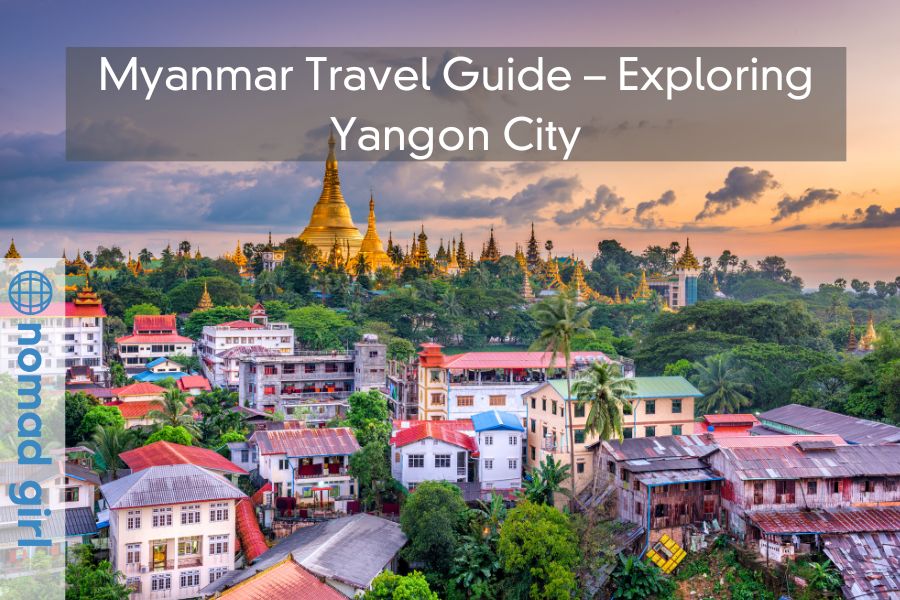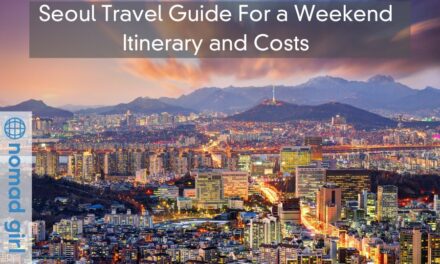If you’re planning a trip to Myanmar, it’s important to check out some key websites like Momondo, Google Flights, and Kayak for competitive flight prices. For budget travellers, popular low-cost airlines like Air Asia and Nok Airways offer regular flights from Bangkok to Yangon or Mandalay. Additionally, flying from Chiang Mai is also an option. As an example, I managed to book a round-trip flight from Bangkok to Yangon for just $ 60 US, even with only 10 days’ notice.
To travel to this destination, it is important to obtain a visa. Surprisingly, the process of obtaining a visa is straightforward and uncomplicated. To apply for an e-Visa, you can conveniently access the online application form on the official Government Immigration website: https://evisa.moip.gov.mm.
The form requires your name, address, passport information, and contact details. Additionally, you will need to upload a passport-quality photo (following the provided guide). The cost of the e-Visa is $50, which can be paid during the application process.
On the next day, an email arrived with the e-Visa approval letter attached. It is important to print this letter as it needs to be presented to immigration upon arrival. At immigration, simply hand over the letter along with your passport to the staff, and you will be stamped immediately and granted entry.
Arriving at the airport
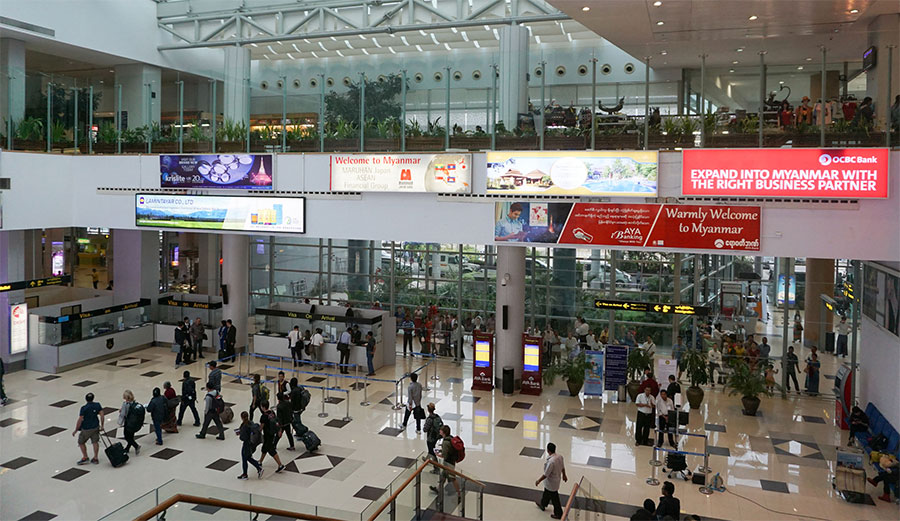
When you arrive at the airport, there are two transportation options available to take you to the city centre: a taxi or a train. Taxis are easily accessible, and you will encounter several drivers as you exit the airport. The standard fare for a taxi ride to downtown Yangon is 5000, so it is feasible to share a taxi with others to lower the cost.
The train station is conveniently located within a 15-minute walking distance from the airport. To reach the station, simply exit the airport and walk past the domestic terminal in a straight direction. Opting for the train route, inspired by my previous enjoyable train experience in Thailand and my overall fondness for trains, I encountered a junction along the way. Fortunately, I sought assistance from the friendly locals who kindly provided directions in English, guiding me towards the correct path.
The ticketing staff at the station were proficient in English. The cost of the train ticket was 200 kyat, which is equivalent to approximately 20 cents in the US. The train journey was enjoyable, with a refreshing cool breeze and picturesque views of charming village areas along the way. These villages offer a stark contrast to the bustling city centre, providing a unique glimpse into the local way of life. If you are considering the 3-hour circular train ride in Yangon, be prepared to witness these villages and slums as well.
The City
Yangon, despite not being a sprawling metropolis, serves as the economic and business hub of Myanmar. Surprisingly, I only discovered this fact after being informed. The city’s streets are conveniently numbered, making it a breeze to navigate and maintain a sense of direction while exploring.

Contrary to what some other travellers have mentioned, I found Yangon to be an enjoyable destination with plenty of activities to engage in during my stay.
In this city, there are limited options for Western-style stores, restaurants, or cafes. Throughout my time here, I have only come across two Western-style stores, along with a shaved ice cafe and a doughnut bakery.
In this area, there are two small Western-style supermarkets where you can find a mix of international and Thai brands. For example, I found a Nivea moisturizer from Thailand that did not contain any whitening ingredients. Additionally, there is a multi-level shopping centre with a lift and escalators, although most of the stores are not well-known brands.
Dangers/Annoyances – Myanmar Travel
It is advisable to refrain from consuming tap water in Yangon. It is recommended to opt for bottled water, which can be easily purchased at various general stores and small supermarkets. During your stay in Yangon, you may consider purchasing 6-litre bottles of water, which are available for around 600 kyats (approximately 60 cents). Additionally, some guesthouses may also provide water for guests.
When visiting Yangon, it is important to be aware of the traffic as it poses the main danger. The roads in Yangon typically lack designated pedestrian crossings, and it is unlikely that drivers will stop or slow down for pedestrians.
In certain areas, it is common for drivers to speed through groups of pedestrians, even if they are in the middle of the road. This can be quite frustrating, especially for individuals who are accustomed to pedestrian crossings and driver courtesy towards pedestrians. In fact, locals often find themselves having to run quickly across the roads to avoid any potential accidents. This behaviour may seem unusual to those from Western countries who are used to a different set of road etiquette.
In Myanmar, particularly in Bagan, there is a significant population of dogs. However, I found that these dogs exhibited friendly behaviour and generally ignored people, unlike the Soi dogs commonly seen in Thailand. It was remarkable to see that hundreds of these dogs appeared to be in excellent health.
When visiting Bagan, many people find the locals to be friendly and curious, showing a genuine interest in getting to know foreigners. However, the experience may differ in Yangon, where some individuals may find the attention to be overwhelming and bothersome. In certain instances, individuals may encounter men who persistently follow them for extended distances, mirroring their movements. This behaviour can lead to feelings of annoyance and discomfort, prompting some to confront these individuals in order to address their concerns.
Yangon, the largest city in Myanmar, faces some cleanliness challenges. Rats can be found in certain areas, and litter is unfortunately prevalent throughout the city. Additionally, it is not uncommon to see food being prepared along the gutters, sometimes with bare hands. However, one particular habit that many men in Yangon engage in is chewing a type of betel chew, which I found to be quite unappealing.
The substance being referred to is a bright red pigment that has the potential to discolour the mouth and teeth. When individuals chew this substance, they often spit it onto the ground, resulting in red stains on the streets. Spitting is a prevalent behaviour, and it is not uncommon to encounter someone spitting within close proximity as you walk.
The Streets -Yangon, Myanmar Travel
In the bustling streets, you will come across a variety of street food stalls. However, it is important to note that the hygiene practices of the stallholders may not meet recommended standards, so caution is advised when considering eating from these stalls. On a more positive note, there are also numerous fresh fruit stalls offering a delightful snack option while you explore the streets. For instance, you can purchase a pre-cut pineapple from a vendor who uses gloves for 1000 kyat or indulge in a small durian for 2000 kyat.
Located in China Town, 19th Street is known for its vibrant barbecues and nightlife scene. One side of the street is lined with a variety of Chinese restaurants, offering a wide selection of delicious dishes, including unidentified meats on skewers. If you’re looking for a unique dining experience, 19th Street is the perfect destination for you.
19th Street in Yangon is a popular spot among both locals and tourists for its vibrant nightlife. As there are no other significant nightlife areas in the city, this street becomes a go-to destination for those seeking entertainment. Although I visited during the off-season, I did encounter two other foreigners during my stay, highlighting the street’s appeal to international visitors.
China Town
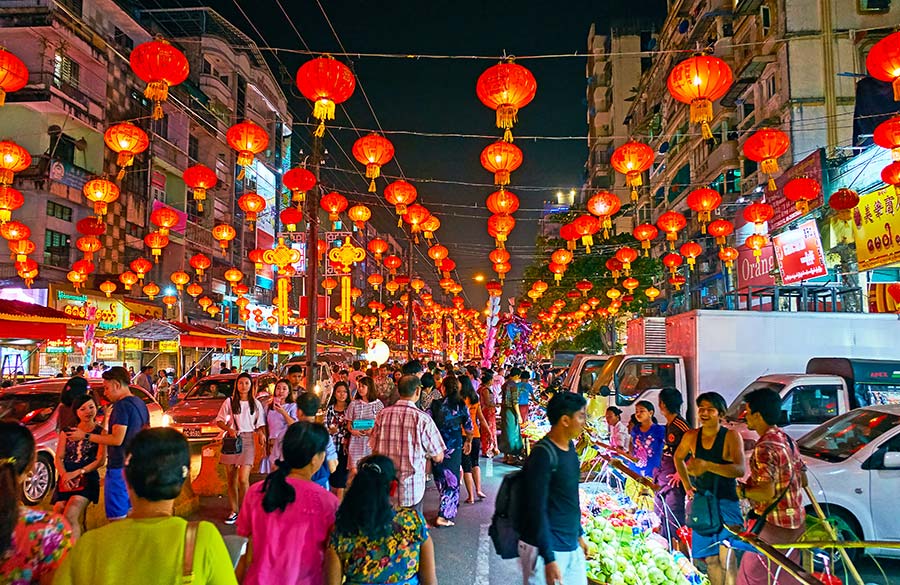
China Town is located in Yangon, specifically between streets 18-24. It can be reached within a 10-minute walk from the Sule Pagoda. Despite being the dirtiest area in the city, it is a favourite among locals and visitors alike. One of the main attractions in China Town is the abundance of fresh fruit stalls where you can purchase delicious fruits. Additionally, the street food markets offer a delightful experience for those who enjoy exploring local cuisine.
In this vibrant setting, the streets are adorned with charming small stalls covered by colourful umbrellas. These stalls offer a variety of grilled meats and traditional dishes that are conveniently prepared and displayed in a buffet-style roadside serving station. Please note that most of these dishes are cooked in oil and primarily consist of meat.
On 20th Street, there are numerous stalls offering congee, a popular rice dish that is similar to warm oats with milk. This dish is a staple in Hong Kong and can easily be recognized. Additionally, the street is filled with vendors grilling unidentified meat skewers on small makeshift barbecues and open fire grills. Visitors can enjoy these street foods while sitting at plastic tables and chairs, and take in the vibrant atmosphere of the bustling markets.
In the late afternoon, fresh fruit stalls become abundant and complement the bustling street food scene. Similar to Thailand, these stalls offer a variety of fruits such as durians, pineapples, mangos, rambutan, longan, apples, mangosteen, and watermelon.
In Yangon, fruit is sold individually rather than by weight. For instance, vendors may offer 10 rambutans for 100 kyats. Overall, fruit tends to be more expensive in Yangon compared to Thailand, except for Durian, which is notably cheaper in Yangon.
Attractions
Yangon, although not a sprawling metropolis with numerous tourist attractions, offers the opportunity to immerse oneself in the vibrant local culture by simply taking a leisurely stroll through its streets. While the small stalls, stores, and markets may seem repetitive, they provide ample opportunities for exploration and observation of everyday life in the city.
Sule Pagoda
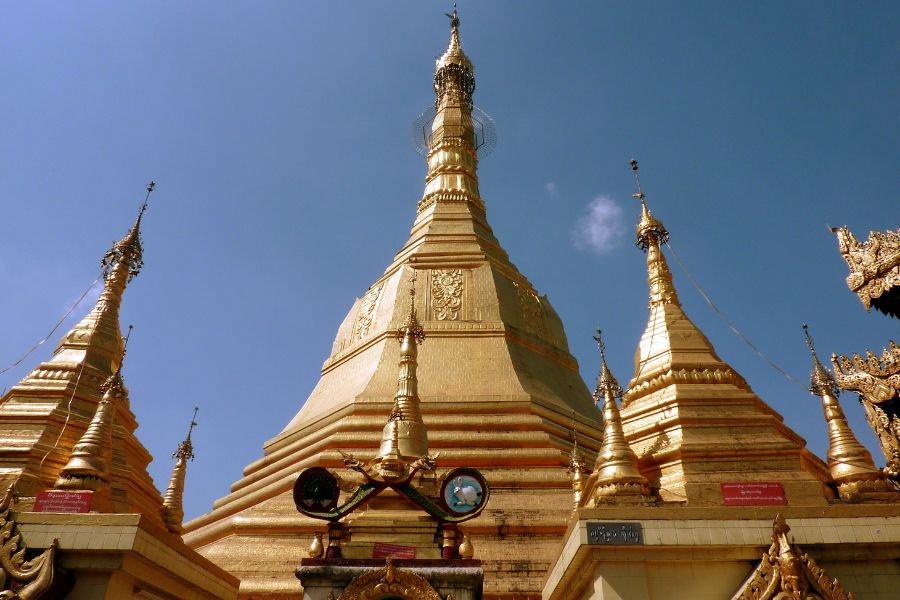
The Sule Pagoda, located in Myanmar, is a significant Burmese Stupa that serves as a central landmark in the city. Historical evidence suggests that the construction of the Sule Pagoda predates the renowned Shwedagon Pagoda in Yangon, making it over 2,500 years old.
Located in the heart of the city, the Sule Pagoda can be easily spotted at the main roundabout. Enclosed by towering walls, this temple boasts a magnificent golden tip that can be admired from afar, even several kilometres away.
When visiting the pagoda, it is necessary to remove your shoes and pay an entrance fee of 3000 kyats (equivalent to $3 USD). Although the interior of the pagoda may not offer much to see, the vicinity of the site is highly recommended for exploration. The surrounding area features a scenic park, well-maintained gardens, and stunning architectural structures.
Shwedagon Pagoda
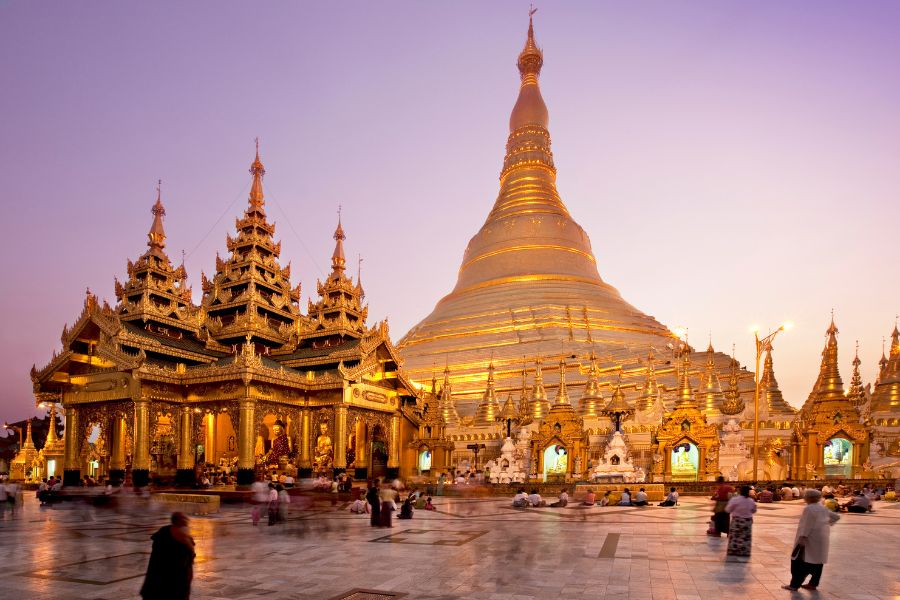
The Shwedagon Pagoda, standing at a height of 99 meters, holds great significance as the most sacred Buddhist pagoda in Myanmar. It attracts a large number of Buddhist locals who visit this religious site.
The pagoda in Myanmar has a base made of brick covered with genuine golden plates. Throughout history, the people of Myanmar have made gold donations to maintain the pagoda, a tradition that continues to this day. At the top, there is a beautifully adorned umbrella crown, embellished with more than 5000 diamonds and over 2000 rubies.
Upon entering the initial temple structure on the way to the pagoda, visitors are kindly requested to remove their shoes. Additionally, a donation fee is required to entrust the care of one’s shoes to a lady at the temple. It is important to note that even if visitors choose to carry their expensive shoes instead of leaving them, the donation fee still applies.
In the first building, there is a set of steps surrounded by vendors selling traditional souvenirs. These souvenirs, such as flowers, flags, and candles, are often purchased by Buddhist pilgrims. As you climb the stairs to reach the top, you will be required to buy a ticket for 8000 kyats ($8 USD).
In the Buddhist tradition, it is customary to walk around Buddhist stupas in a clockwise direction multiple times. Once inside, you can witness local people engaging in this practice, as well as praying, kneeling, and bowing repeatedly.
In Burma, the day of the week you were born holds significant meaning for its people. I discovered this while researching the pagoda. It now makes sense why two taxi drivers asked me about my birthday. Each day of the week is associated with a particular animal: Monday represents the tiger, Tuesday the lion, Wednesday the elephant, Thursday the mouse, Friday the guinea pig, Saturday the naga, and Sunday the Garuda. Local Burmese Buddhists show their devotion by adorning the Buddha image that corresponds to their birthday with flowers, flags, and other offerings.
The Shwedagon Pagoda, located at the end of Shwe Dagon Pagoda Road, is the top tourist attraction in Yangon. While walking from the main city area, visitors have the opportunity to visit four other stunning temples along the way. It is advisable to carry an umbrella during the off-season in case of brief showers, which occurred for approximately 10 minutes on both days I explored the temples. Alternatively, taking a taxi from downtown Yangon to the pagoda will cost around 2000 kyat ($2 USD).
Bogyoke Aung San Market
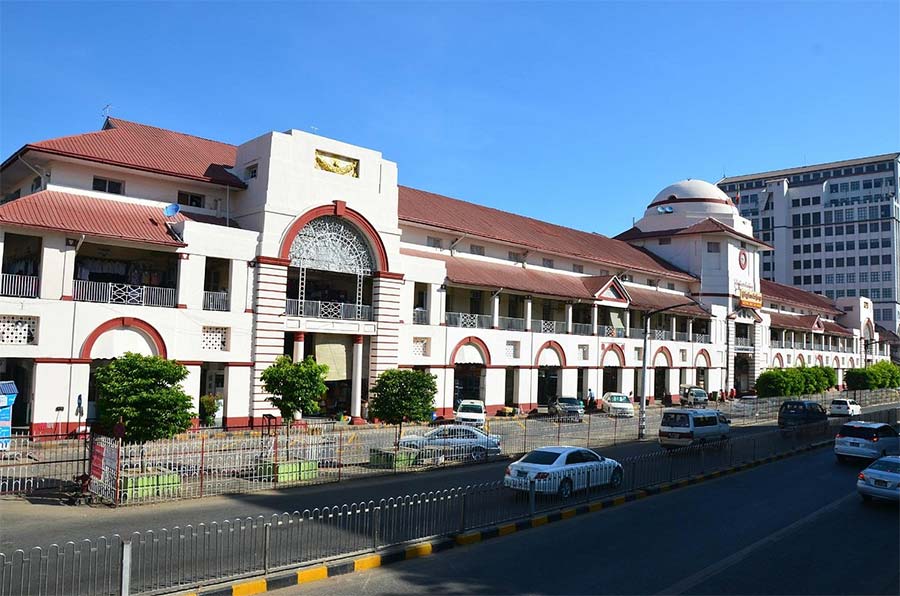
The Bogyoke Aung San Market, located on Bogyokeang San Road in the main city area, is a large market building that was constructed in 1920. It is conveniently situated just a few blocks away from the Sule Pagoda and can be easily reached by foot.
The market is a bustling bazaar that is highly favoured by the locals. It offers a wide range of items for purchase, including luxurious jewellery, traditional Myanmar dresses known as longyis, silk fabrics, materials for custom designs, clothing, shoes, intricately carved wooden pieces, paintings, and various stalls dedicated to hair supplies, such as colours, wigs, and accessories.
Circular Train Ride
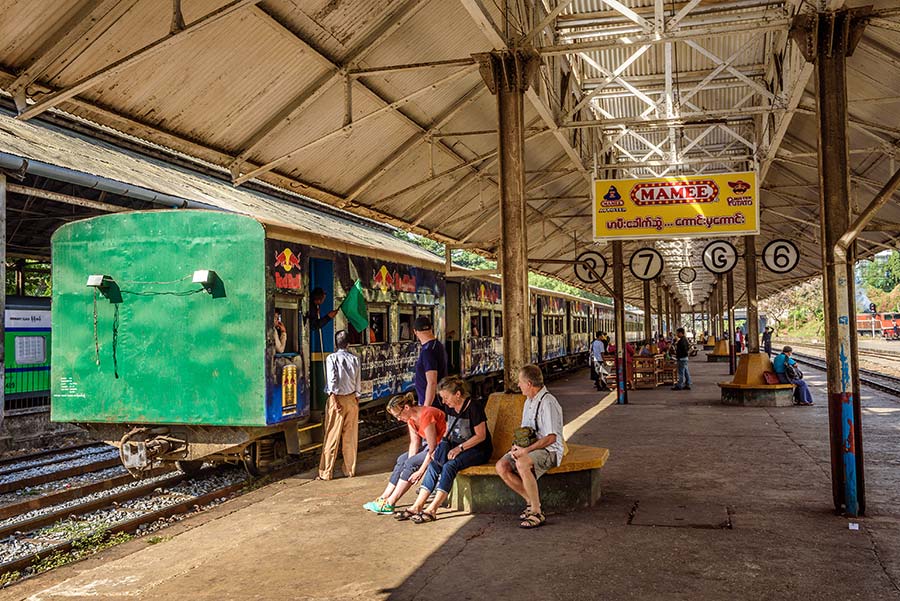
The circular loop around Yangon spans a distance of 50 kilometres and typically takes around 3 hours to complete. Departing from Yangon Railway Station, which is conveniently located just a 10-minute walk north of the Sule Pagoda, the train makes stops at 39 small stations along the way. A ticket for this journey costs only 300 kyat, which is equivalent to 30 cents.
Exploring the outskirts of Yangon offers an insightful glimpse into the daily routines and rural settings of the city. During my excursion, I witnessed a remarkable sight of a woman gracefully balancing a sizable basket of chickens on her head, with the curious birds peering out from above. Additionally, I observed numerous slums and individuals bathing outdoors behind their huts using buckets, often situated alongside the train tracks. Remarkably, many of them remained dressed in their traditional longyi attire while performing this daily ritual.
During your journey, you have the option to disembark at any of the stops and take the opportunity to explore. One particular stop worth considering is the train station in Danyingon, which features a large market. This market offers an interesting and enjoyable experience for a quick exploration. However, it’s important to note that if you choose to explore, you will need to wait for the next train to continue your journey.
Where did I stay?
In this post, we will provide you with helpful information about Yangon, allowing you to make an informed decision about visiting this destination. While tourism in Yangon is still developing, it is important to note that the city does not offer a vast selection of guesthouses. However, if you are in search of a clean and straightforward guesthouse in the city area, we highly recommend Agga Bed and Breakfast, conveniently located on Street 11.
The location of accommodation was conveniently situated within walking distance of various attractions, markets, fruit stalls, and a supermarket. This was particularly beneficial for me as I preferred to avoid taxis and street food. The accommodation offers both private and dormitory rooms, with English-speaking staff available to assist guests. Additionally, a complimentary breakfast consisting of eggs and bread is provided.
The staff at this guesthouse are known for their singing, which can be heard both during the day and at night. However, some visitors have found this to be annoying. Additionally, it has been reported that the guesthouse tends to overcharge for booking buses and airport transfers. As a solution, it is recommended to book a taxi and bus independently.


